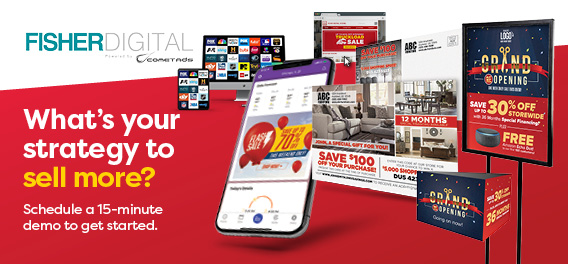Mind the Gap: Consumer Wants vs. Small Businesses Offerings
March 25, 2019Small business play a huge role in our economy.
Our economy would fail if it wasn’t for small businesses—small businesses account for 99.9% of all U.S. businesses. They also account for 47.5% of all U.S. employees.
A special day was set aside to honor all small business owners. National Mom and Pop Business Owners Day is coming up on March 29. In recognition of the upcoming holiday, we will examine the top challenges that small business owners face and look at the gaps between what consumers want and what digital services small businesses provide.
Top Challenges
Running a business comes with its own set of challenges. Small business owners rated their most important challenge in a Gallup Poll. The top results from that poll are as follows:
• 24% Government Policies
taxes, regulations, tariffs
• 18% Hiring
hiring and retaining qualified staff
• 15% Economic Issues
attracting customers, targeting business opportunities, finding new business
• 15% Financial Issues
financial stability, funds for capital investment, credit availability, accounting
• 13% Marketplace Issues
competition, marketing and advertising, product improvement and availability
Managing social media accounts is more challenging than filling out income tax paperwork, according to findings from the 2018 Small Business Social Media Confidence Survey.
Most small business owners would not say their social media marketing efforts are going great. Just 33% are satisfied with their social media ROI and only 28% are very confident with their strategy and success. The biggest problems with social media include:
• 39% Too many confusing platforms and choices
• 36% Adjusting tactics for changing algorithms
• 31% Too complicated for non-digital marketers
• 23% Afraid of missing out
• 19% Don’t understand lackluster results
Consumers’ Wants vs. What Small Business Offer
Small businesses are “an undisputed engine of the nation’s economy,” Visa wrote in its Digital Transformation of SMBs: The Future of Commerce publication. Both consumer preferences and digital technologies continue to evolve. Visa said it wrote the publication to serve as a guide to help small businesses leverage technology and digital commerce to improve the customer experience.
Many insights from this publication show a gap between what consumers want and what small businesses are offering. We will highlight key insights about websites, online shopping, online ordering and loyalty programs in this section. All data is from the Visa publication.
Consumers have a bit of a conundrum. While 87% think it’s important to support local small businesses, cross-channel buying is becoming increasingly common. The modern consumer wants a convenient shopping experience that includes an online component, whether it’s researching the product or buying it.
But less than half of small business owners have a website (including the capacity to sell online), so consumers are caught between supporting a small business or enjoying a modern, convenient shopping experience.
What online habits do consumers have?
• 81% of U.S. Internet browse/research/compare products online
• 70% Buy products online
• 25% of Purchases started online are completed in-store
• 52% Search online/check a new business’s website before visiting in person
Millennials are most likely to do so, followed by Gen X and Baby Boomers
• Over 80% of consumers are motivated to shop at a business with an easy-to-use website
The Small Business Gap: A website helps get more than half of customers in the door of a brick and mortar store, yet most small businesses lack an online presence. Just 46% of small businesses have an online presence. 46% of small businesses sell their products/services online; of those that do, about 15% of their sales come from online channels.
Does digital marketing impact consumers?
• 63% of Consumers prefer to hear from businesses digitally
• 46% prefer email communication
• 11% prefer social media communication
• 68% of Consumers say online reviews are an important consideration when determining whether to shop at small businesses
• Google and Facebook are the #1 and #2 sites for reviews
• 63% of consumers say that a business has never responded to a review
The Small Business Gap: Overall, 88% of small businesses engage in some form of digital marketing. Small businesses in the services and grocery industries are the least likely to engage in digital marketing. Most consumers are open to receiving digital communications from businesses, so why not use email and social media? Almost 7 in 10 consumers factor online reviews into their decisions about whether or not to shop at a small business, yet most reviews don’t get a response from the business. Allocating resources to responding to reviews on Google and Facebook (at least the negative ones) would serve a small business well.
Which services motivate a consumer to shop at a business?
• 96% Free shipping/delivery
• 95% Discounts on relevant products
• 91% Able to shop both in-store and online
• 91% Price matching
• 91% Same options in-store as online
• 91% Short checkout line
• 90% Buy online and return in-store
• 85% Ship to home if not in stock
• 83% Same day delivery
• 80% Online order ahead to pickup
The Small Business Gap: Only half of small businesses have tried services such as shipping/delivery, online order ahead and curbside pickup yet most consumers want some form of online order options.
Loyalty programs may be more important to consumers than small businesses realize.
• 78% of Consumers are more likely to choose a business that offers a loyalty program than one that does not
• 65% of Consumers check to see if a business has a loyalty program before shopping at a store
• 90% Prefer a digitally-based loyalty program
The Small Business Gap: While 62% of small businesses agree that business is highly dependent on customer loyalty, only 1 in 5 small businesses offer a loyalty program with grocers as the most likely to offer one. Small businesses that offer loyalty programs said that loyalty programs have big impacts on repeat business, average ticket size and revenue.
Image was designed by yanalya / Freepik

